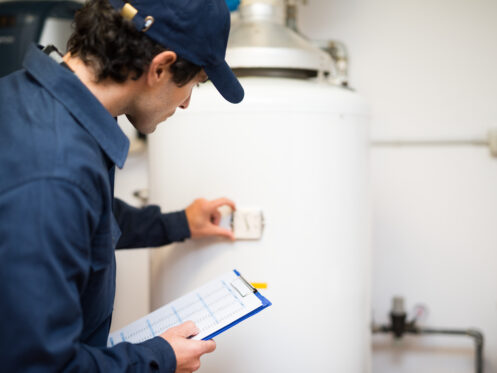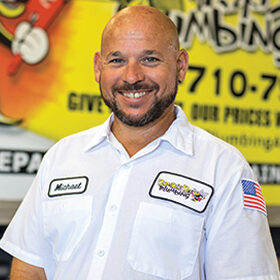Water softeners are designed to filter out hard minerals to make water safer to drink. Softer water is also beneficial for your skin and hair, and it can make laundry and dishes cleaner. If you’re looking for a water softener, you should know that different types of softeners use different filtering methods. Understanding how long each type lasts can help you choose the best option for your home.
Salt-Free Water Softeners
Unlike traditional water softeners, which utilize salt to dissolve hardness-causing minerals, salt-free models do not. Instead, the hard minerals in the water crystallize and become less sticky, rendering them incapable of accumulating as scale. This benefits your plumbing by reducing scale buildup. These systems can last up to 15 years or longer with proper care.
Salt-Based Water Softeners
Salt-based water softeners have a tank with resin beads. When exposed to salt water, the beads lose their calcium and magnesium ions and become more coated with sodium ions. The tank maintains its connection to a drain line, which distributes the softened water throughout the home’s plumbing system. Most salt-based systems can last 10 years with proper care, but their effectiveness significantly dwindles.
Reverse Osmosis Water Softeners
Reverse osmosis water softeners remove contaminants like chlorine and sediments through the use of a semi-permeable membrane. The removal process replaces the minerals with sodium ions. With regular maintenance, they can last up to 15 years. However, you’ll have to replace the membrane once every two to five years. The filters on these systems tend to require replacement once every six to 12 months. If you use one of these systems and notice low water pressure, it’s a good sign to check the membrane.
Showerhead Water Softeners
Showerhead water softeners alter the charge of mineral ions in the water. This not only softens the water but minimizes scale buildup in plumbing and appliances as well. The showerhead uses negatively charged particles to draw them in to eliminate minerals with positive ions. Showerheads designed to soften water only work by removing the hardness of the water, not by adding more negatively charged ions. With regular care, these softeners can last up to 15 years. If you notice white crust accumulation on the showerhead, it might be time to replace it.
Dual-Tank Water Softeners
When one tank is empty, a dual-tank water softener switches to the other to renew the water as needed. This is in contrast to single-tank softeners, which limit soft water availability because they have to cycle on and off to clean and regenerate. A dual-tank water softener can last 10 to 15 years with proper upkeep.
Magnetic Water Softeners
Magnetic water softeners function by exposing the water to a powerful magnetic field. This changes the molecular functioning of sediment and mineral buildup in the water, preventing chemical reactions that result in hard water. When compared to other options, magnetic water softeners need less maintenance and have a much longer lifespan of up to 40 years. The problem is that they don’t actually filter out minerals in the water. This means they can’t help with scale and grime accumulation in plumbing.
Choosing the Right Water Softener for Your Home
There are multiple factors to consider when choosing a water softener carefully. Consulting a plumber can help you make the right selection.
Household Size
With an average daily use of 75 gallons per person, a normal family of four consumes around 300 gallons of water. A larger capacity water softener may be necessary if your water is very hard or if your water use is particularly high.
Grain Capacity
A water softener’s grain capacity is the maximum number of hard water mineral grains it can remove before needing regeneration. Regenerating your water softener every three to ten days will improve its performance and reduce its operating costs.
Regeneration Style
Another important aspect to learn about is the softener’s regeneration process. Depending on your water use habits, you can program softeners to renew at regular intervals (e.g., every four days or once a week). Choosing one that meets your regeneration preferences is key to selecting the right option.
Specific Contaminant Concerns
Some softeners do more than just soften the water; they also filter out other impurities, including chlorine and elevated amounts of iron and sediment. Higher-capacity versions usually include these characteristics.
Convenience Features
Water softeners with safety and convenience features can make maintenance easier. Some even come with touch screens. Those with low-salt indicators simplify, making sure the devices work as they should. Water softeners with water flow monitoring features can help you keep track of how much water your home uses. You can use this data to create and implement water conservation strategies, making your home more eco-friendly.
Installation and Maintenance
Salt-free water softeners are easier to install than their salt-based counterparts. Single-tank systems also tend to be easier to install than dual-tank versions. All salt-based systems require adding salt from time to time. No matter the type you choose—salt-free or salt-based—it will require a deep cleaning from time to time.
Warranty
Many water softeners come with warranties, some even with life-long guarantees. Understanding the terms and conditions of these warranties can help you choose a device with adequate coverage. A warranty provides much peace of mind in knowing you don’t have to pay for required repairs or replacements if a part malfunctions.
Compatibility With Other Water Filtration Systems
Most experts recommend combining water softeners with other water filtration systems. This provides the ultimate form of water treatment. They are particularly useful for homes that want to filter out the taste of chlorine in water. Other water filtration systems can also help remove lead, bacteria, and certain viruses from a home’s water supply.
Water Softener Maintenance Tips
Some routine maintenance tasks can keep your water softener running smoothly and longer. You should check the salt levels periodically and always make sure you’re using the right salt. It’s usually okay to wipe the outside of water softeners using mild soap and warm water. Don’t ever use vinegar or bleach to wipe them down since this can interfere with the chemical reactions that take place. It may also be necessary to drain the brine tank on a regular basis.
If a salt bridge forms at the bottom of the tank, it’s best to turn the unit off and knock the bridge loose using a broom handle. Then, with a plastic container, scoop out the salt pellets to your best ability and rinse the bridge with warm water; this will help dissolve any remaining salt. You’ll have to add more salt after it finishes its regeneration cycle.
Bumble Bee Home Services can help you select the right water softener for your Glendale, AZ, home. We also work on water heaters, perform hydrojetting, drain cabling, plumbing repairs, and much more. Our locally operated business is committed to customer satisfaction. Contact us today to learn more about water softeners.



